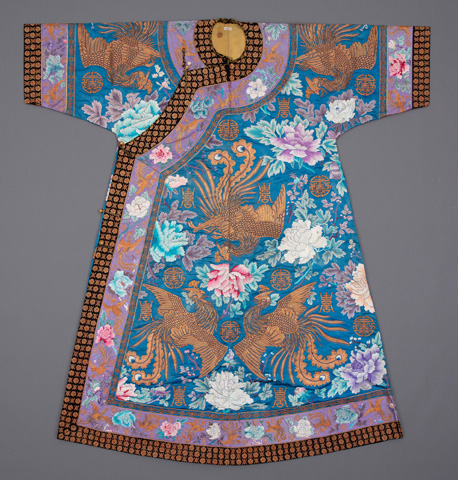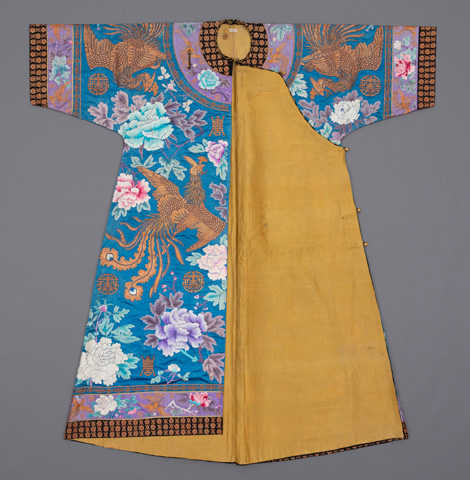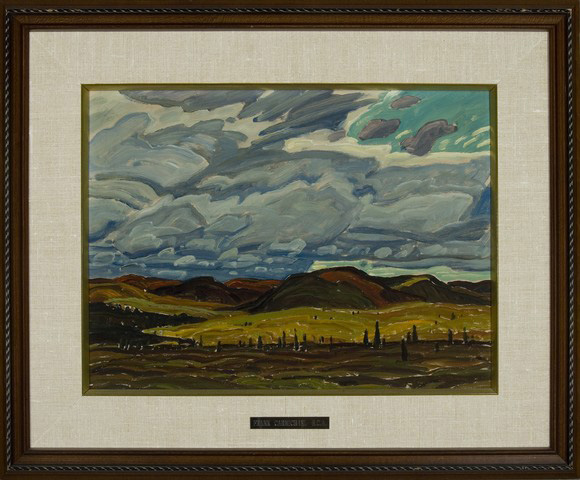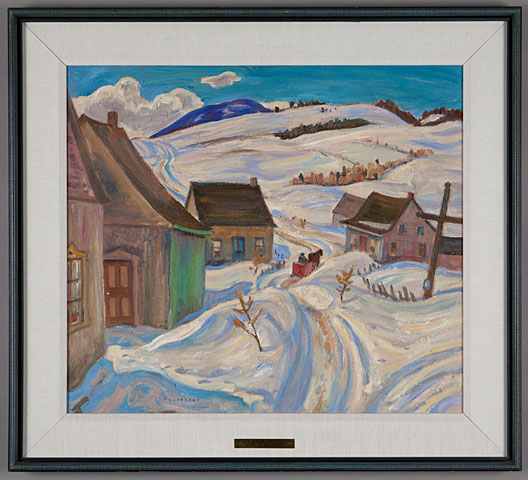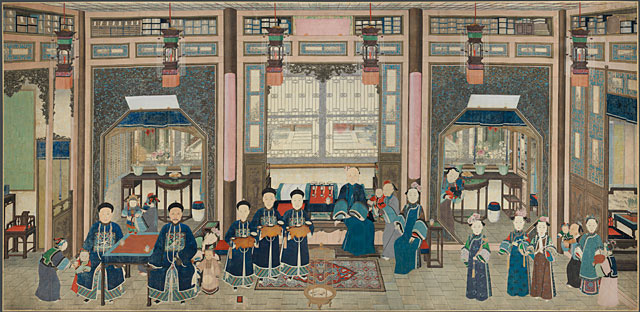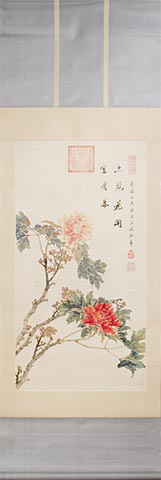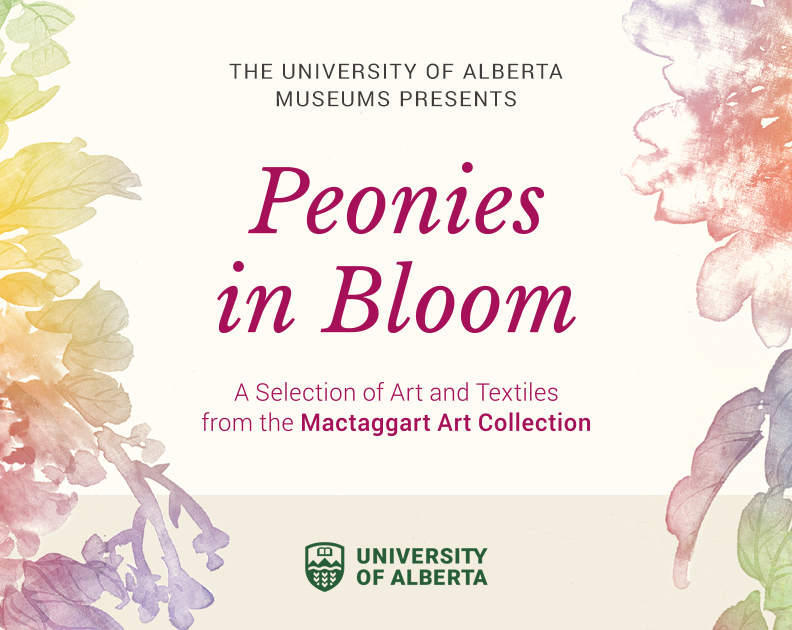2005.5.250 - Embroidered Silk Robe for the Dowager Empress
Mactaggart Art Collection Read more about this collection »
Item Details
Boldly coloured peonies - in pink, mauve, blue, and white - fill the background of the main fabric. These flowers have been expertly rendered in a flat, even satin stitch with an ombre effect, providing dimension to every blossom. Peonies are the flower related to springtime and their inclusion on this robe may represent the feminine beauty of the wearer. The blue background with a mauve border, made from aniline dyes introduced from Europe at the end of the nineteenth century. Although we cannot officially confirm this robe was owned by Empress Dowager Cixi, she was known to have a fondness for peonies, and this style of robe certainly influenced the style of multiple other extant robes.
In the late Qing dynasty, chenyi, or informal court robes, became popular among the imperial elite women as this garment was not regulated by official codes and could be styled in multiple colours, motifs, and shapes, as opposed to more formal robes. In comparison to another informal robe style, the changyi, this robe has narrower sleeves and no side slits. The sleeves follow the general shape of more formal Manchu style robes, which would typically extend longer and end in a horse hoof-shaped cuff, and the inclusion of phoenixes still follows the conventions of formal court attire.
External Links


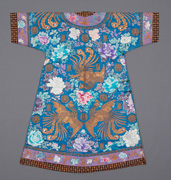
Citation
Page Citation for 2005.5.250 - Embroidered Silk Robe for the Dowager Empress
Page Citation
"2005.5.250 - Embroidered Silk Robe for the Dowager Empress, Mactaggart Art Collection." University of Alberta Museums Search Site, https://search.museums.ualberta.ca/21-19472. Accessed 12 Oct. 2025.
Terms of Use
Research is ongoing for objects in the 30 registered collections that make up the University of Alberta Museums. If you have questions, corrections, or additional information about this object record, we invite you to contact us at museums@ualberta.ca.
